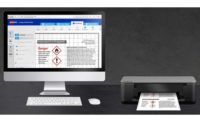Among the industries affected by the revisions in OSHA’s Hazard Communication Standard (HCS) is the restaurant industry, where workers may be exposed to an array of potentially hazardous chemicals such as oven cleaners, floor cleaners, pesticides, disinfectants, drain cleaners, soaps, detergents, and latex. These materials can cause everything from infections to severe burns.
As with other industries, restaurant owners and operators have the primary responsibility for protecting the safety and health of their workers by following the safe work practices and complying with the HCS.
- If hazardous chemicals are used, employers need to implement a written program that meets the requirements of the HCS to provide for worker training, warning labels and access to Safety Data Sheets (SDS).
- The Hazard Communication Standard ensures employee awareness of the hazardous chemicals they are exposed to in the workplace and how to prevent exposure.
- Provide Safety Data Sheets for any hazardous chemicals that are used in the workplace.
Additionally, employers must provide workers who handle hazardous chemicals with appropriate personal protective equipment (PPE) and suitable facilities for quick drenching or flushing of the eyes and body if exposure to injurious corrosive material is possible. Facilities should be located within the work area for immediate emergency use. Medical Services and First Aid Standard [1910.151(c)].
Employers should consider:
- Using cleaning chemicals that are not considered hazardous.
- Automating the dispensing of cleaning chemicals whenever possible to avoid employee contact with chemicals.
- Limiting employee contact with dishwashing detergents by providing dishwashing machines with automated detergent dispensers.
- Workers must still be cautious and use appropriate PPE such as goggles and gloves when changing out detergent containers.
- Ensuring that chemicals that are not compatible with each other are not stored together (check SDS).


